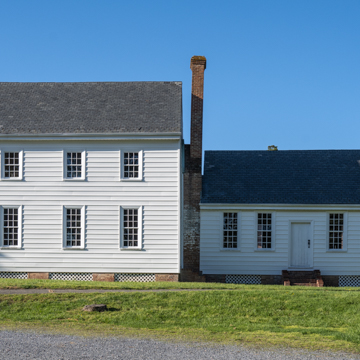In the 1930s a local organization called Restorers of Mount Carmel in Maryland set about saving the house known as The Monastery, preserving an important piece of early Catholic history in Charles County. A group of four Carmelite nuns arrived at Port Tobacco in 1790 from Belgium. Mother Bernardina Matthews and her order established a chapel, school, and self-sufficient farm on the Mount Carmel property in addition to building several dwellings. By 1831 the Carmelite sisters were struggling to maintain the farm, so the remaining nuns were ordered to transfer to the convent in Baltimore, effectively abandoning the Mount Carmel property for a hundred years.
The surviving two-part wood house includes a two-story main block attached by a small hyphen to a one-story side wing. Beaded exterior sheathing dating to the 1930s restoration covers brick nogging between the structural beams at the main block. The plainness of the restored Monastery speaks to the austere life of the Carmelite nuns. Currently this historic structure sits amidst a mid-twentieth-century pilgrimage chapel and a convent for the Dicalced Carmelite nuns who returned to Mount Carmel in 1976.





